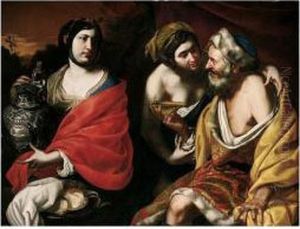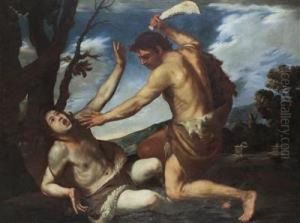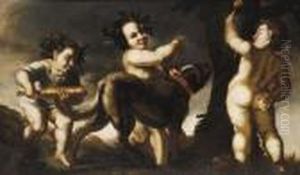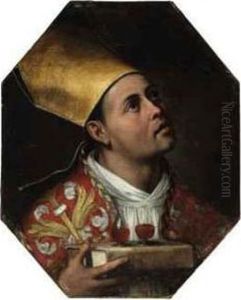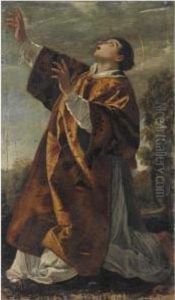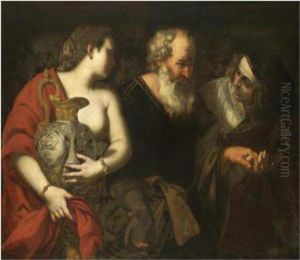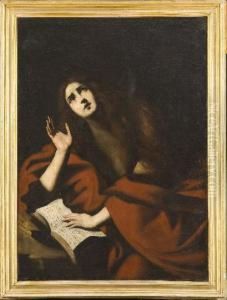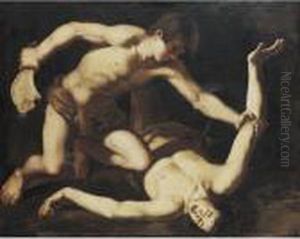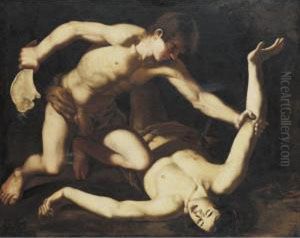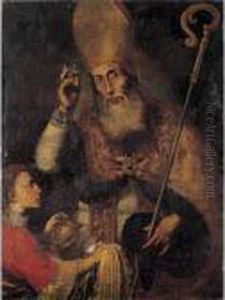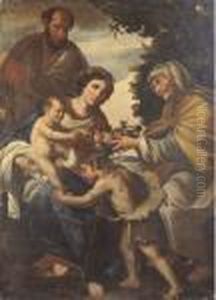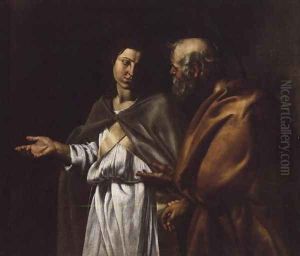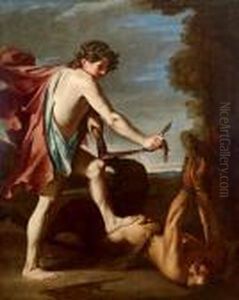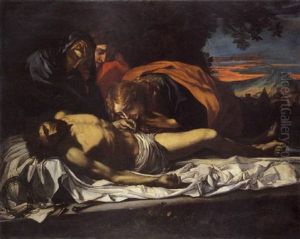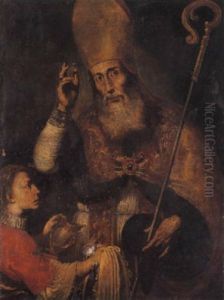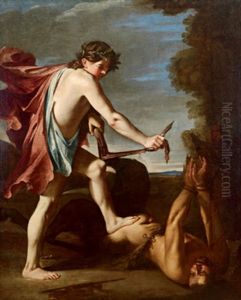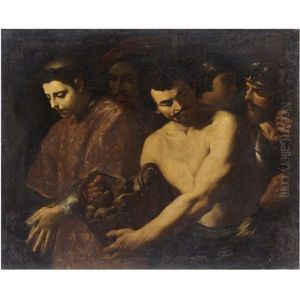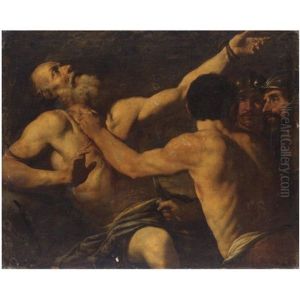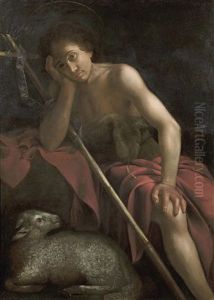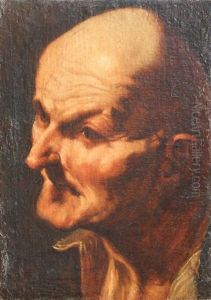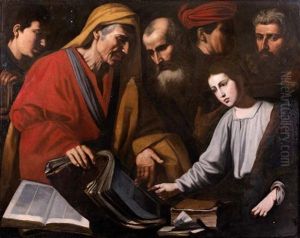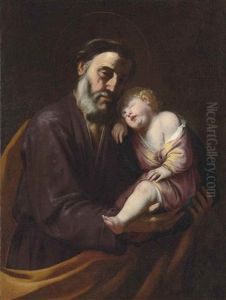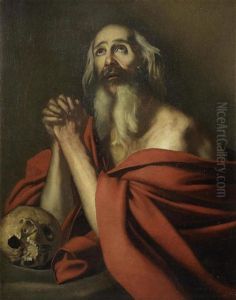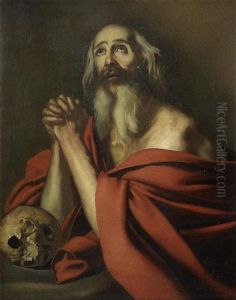Filippo Vitale Paintings
Filippo Vitale was an Italian painter of the early Baroque period, born around 1585 in Naples, Italy. He was among the significant figures contributing to the development of Neapolitan painting during a transformative era in art history. Vitale's early life is not well-documented, but it is believed that he initially trained under his father, Luigi Vitale, who was also a painter, although not much is known about his father's work.
Filippo Vitale's style was deeply influenced by the dramatic realism of Caravaggio, a dominant force in Baroque painting, who had a profound effect on many artists of the time. Vitale, however, infused his work with a distinct sensitivity and a softer approach to chiaroscuro, which differentiated him from the extreme tenebrism often associated with Caravaggio's followers.
Throughout his career, Vitale worked on several important commissions for churches and noble patrons in Naples. His religious works are characterized by their emotional depth and the vivid portrayal of biblical scenes. Notably, Vitale was also involved in decorating the Certosa di San Martino, one of the most significant monastic complexes in Naples, which showcases some of his best work, including frescoes and altarpieces.
Despite his contributions to the Neapolitan Baroque movement, Filippo Vitale's work was somewhat overshadowed by the achievements of his contemporaries and successors, such as Jusepe de Ribera and Massimo Stanzione, who were more prolific and whose styles evolved in response to changing tastes. Nevertheless, Vitale's paintings are valued for their unique blend of realism and emotion, offering insight into the transitional phase of Neapolitan art from the late Renaissance to the Baroque period.
Filippo Vitale died in 1650 in Naples. His legacy, while not as widely recognized as that of some of his peers, remains an important piece of the puzzle in understanding the evolution of Italian Baroque painting. Today, his works can be found in various museums and collections, appreciated by those who seek to understand the depth and breadth of Baroque art in Italy.
